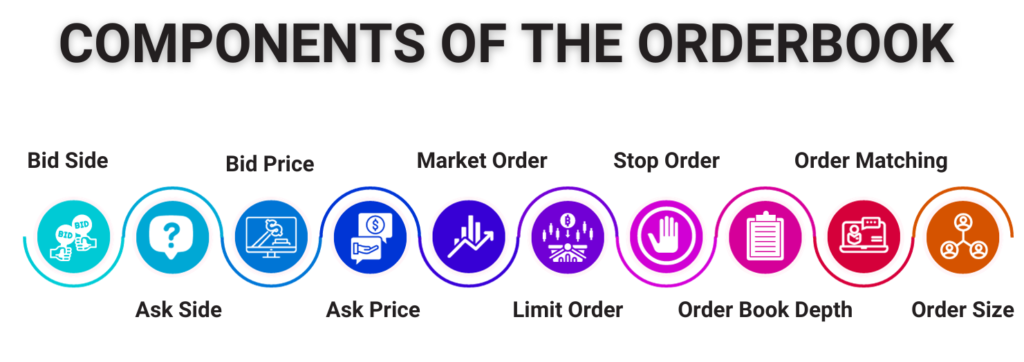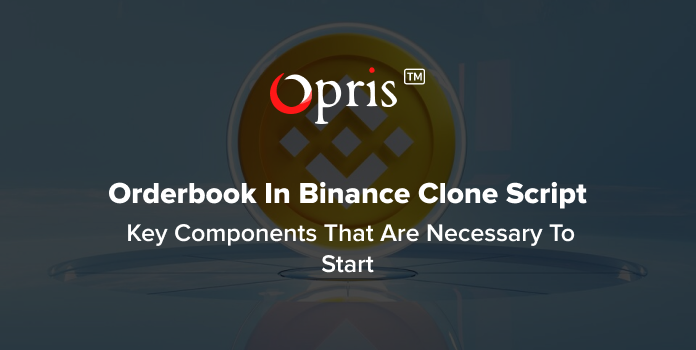Orderbook binance clone script development
Orderbook in the binance clone script is one of the processes of creating an orderbook that includes all the main features same as the Binance exchange. This involves developing a strong order-matching system to guarantee effective buy and sell order execution for a range of cryptocurrencies. Developing the script entails putting security measures in place to protect user data and transactions. User interfaces resemble Binance’s user-friendly trading platform, giving cryptocurrency enthusiasts who are trading a comfortable and seamless experience.
Introduction
Have you ever been curious about how a trading mechanism in a Binance clone script works? The order book, which is the beating heart of cryptocurrency trading, is all examined in this blog. We will also understand the essential components, from peeling back layers on real-time buy and sell orders to interpreting its influence on market tides.
Get to know more about how does the orderbook binance clone script work? And get to know how you can start one. Let us take a deep dive into this intriguing world of cryptocurrency trading!
What is an orderbook?
An order book is a continuously updated, real-time ledger on a financial exchange that lists buy and sell orders for specific assets. By giving traders access to current market supply and demand data, it enables traders to make well-informed decisions. Sell orders indicate the supply, and buy orders indicate the demand at various price points. You can develop an orderbook which is an essential tool for comprehending market dynamics and projecting future price movements is the order book.
Understanding the components of the orderbook
Here are some of the main components that are included in the orderbook. Our orderbook development solutions will include the following:

The following are some of the main components that one has to include when you create a orderbook.
How to use the orderbook exchange in Binance clone script?
A Binance clone script’s order book exchange must be optimized through dynamic interaction with real-time buy and sell orders. Look at ask and bid prices in detail, assess the depth of the market, and look for possible trends. Trade with strategy, selecting limit orders for set pricing or market orders for quick transactions. Use the order book API provided by the script to automate trading strategies with ease.
One needs to analyze the dynamically shifting order book and comprehend the subtle interactions between orders. This proactive strategy gives traders the tools they need to make wise choices and navigate the complexities of cryptocurrency trading on the platform that is modeled after Binance with accuracy and flexibility.
Read More: How to Launch a Successful Crypto Exchange Platform like Binance Using a Binance Clone Script?
How to customize the orderbook exchange display in binance clone software?
The Binance clone software’s order book exchange display customization process is based on the business requirements. Administrators can customize the UI to fit the needs of specific users by changing font styles, color schemes, and layout preferences. Through customization better visibility of important trading data, like bid and ask prices, which also improves user experience.
As an orderbook binance clone script development service provider, we create the technical indicators and sophisticated charting tools. Customizable settings or an admin panel are typically offered by Binance clone software, allowing users to tailor the order book display to their own tastes and analytical needs.
How does Orderbook work in different crypto exchanges?
Order books work in a similar way on different cryptocurrency exchanges. A trader’s bid or ask is entered into the order book when they place an order. All of the open orders are shown in the order book along with their quantities and prices. The prices that are the highest bid and lowest ask make up the “spread.” A trade happens when the bid and ask are equal, affecting market prices. While some exchanges might have different features or employ different jargon, order matching, and price determination are the same basic process across all of them, providing a clear and open marketplace for traders to transact.
Orderbooks vs AMM’s – What are the main differences between them?
Two main models are used in the design of cryptocurrency exchanges: the Orderbook model, which is most common in CEXs, and the AMM model, which is mostly used by DEXs.
Orderbooks
Dynamic Price Discovery: A direct method of price discovery is provided by order book models. Prices are highly dynamic and dependent on the state of the market because they are determined by the precise prices at which users are willing to purchase or sell an asset.
Accuracy and Control: Traders can be very specific about the price they wish to sell or purchase at. More tactical stances, like establishing take-profit or stop-loss points, is possible.
Concentrated Liquidity: The current market price is usually the center of concentration for liquidity in order books, which can result in tighter spreads and better prices for highly liquid assets.
Advanced Trading Strategies: Provides traders with greater flexibility by supporting a variety of trading strategies and tools, such as market, limit, and stop orders.
AMM
Simplicity: Another one of the main differences is that AMMs do not require order books and allow users to trade directly against the liquidity pool, they provide a simple trading environment.
Liquidity Providers’ Accessibility: Anyone can become a liquidity provider and receive fees. Unlike the traditional market-making model, which may be exclusive to institutional players or those with substantial resources, it simplifies the process.
Flexibility with Token Pairs: AMMs make it comparatively simple to establish new trading pairs, which enables the listing and exchange of a large range of tokens without the requirement for a counterparty.
Resistance to Front-running: Compared to traditional orderbooks, AMMs may be less vulnerable to some forms of front-running because they do not have an order book and their pricing algorithm is predictable.
Creative Financial Products for Extra Income: The AMM model has spawned a number of creative derivative financial products, such as liquidity mining and yield farming, which provide users with more ways to make money.
These are some of the main differences between order books and AMM’s. Our orderbook binance clone script development services offer many customized solutions.
What are the key features of the orderbook binance clone app?
These orderbook Binance clone app’s features are some in the crypto exchange. The following are some salient features:
1. Admin dashboard
2. User-friendly interface
3. Margin trading
4. Futures trading
5. Staking integration
6. Social trading
7. Advanced charting
8. KYC integration
9. Cold wallet integration
10. Token launchpad
11. Security features
These features, which combine intuitive user interfaces with necessary tools for order execution and market analysis, add up to a comprehensive trading experience when creating or utilizing a Binance clone app with order book functionality.
How does the orderbook binance clone script work?
A Binance clone script’s Order Book serves as a dynamic marketplace where users can create, view, and carry out buy and sell orders for different cryptocurrencies. It tracks market supply and demand in real-time, just like Binance’s original platform. Users have the option to set limit orders with specified prices or place market orders for immediate execution. The script’s algorithm regularly updates the order book, giving users access to the most recent market data. Trades take place when a seller’s ask price and a buyer’s bid coincide. The order book’s layout and features replicate Binance platform’s user-friendly interface for smooth cryptocurrency trading.
What revenue terms are used to develop an orderbook in the binance clone application?
In an orderbook binance clone script, building an order book requires taking into account different revenue terms. Trading fees, which impose a percentage charge on each trade are one of the main sources of income. When users engage in leveraged trading, margin trading fees also add to their revenue.
Revenue is derived from token listing fees paid by new projects looking to get visibility on the platform and withdrawal fees paid by people transferring money off the platform. The aforementioned revenue streams are responsible for maintaining the platform’s operational expenses and enabling continuous improvements to the orderbook functionality and overall user experience.
Why choose Orderbook binance clone script development services from Opris?
Choosing an orderbook binance clone script development service provider like Opris guarantees a feature-rich and smooth cryptocurrency trading platform. Opris is outstanding at creating highly secure and customizable solutions that mimic the powerful order book features of Binance. Blockchain technology experience allows us to provide scalable and effective scripts that incorporate necessary features like advanced security protocols, a wide range of trading pairs, and real-time order updates. For those looking for dependable and all-inclusive orderbook Binance clone script development solutions, Opris is the best option because of its dedication to quality and customized user experiences.
Conclusion
To sum up, you can build a robust cryptocurrency trading ecosystem with order book inside a Binance clone script. This script guarantees real-time order updates, a wide range of trading options, and strengthened security measures by replicating the dynamics of the original Binance platform. It provides consumers with a dependable and easy-to-use entry point into the dynamic realm of digital asset exchange, making it a monument to innovation. In the competitive and dynamic world of cryptocurrency trading, a well-executed Binance clone script can be a potent catalyst for success.



